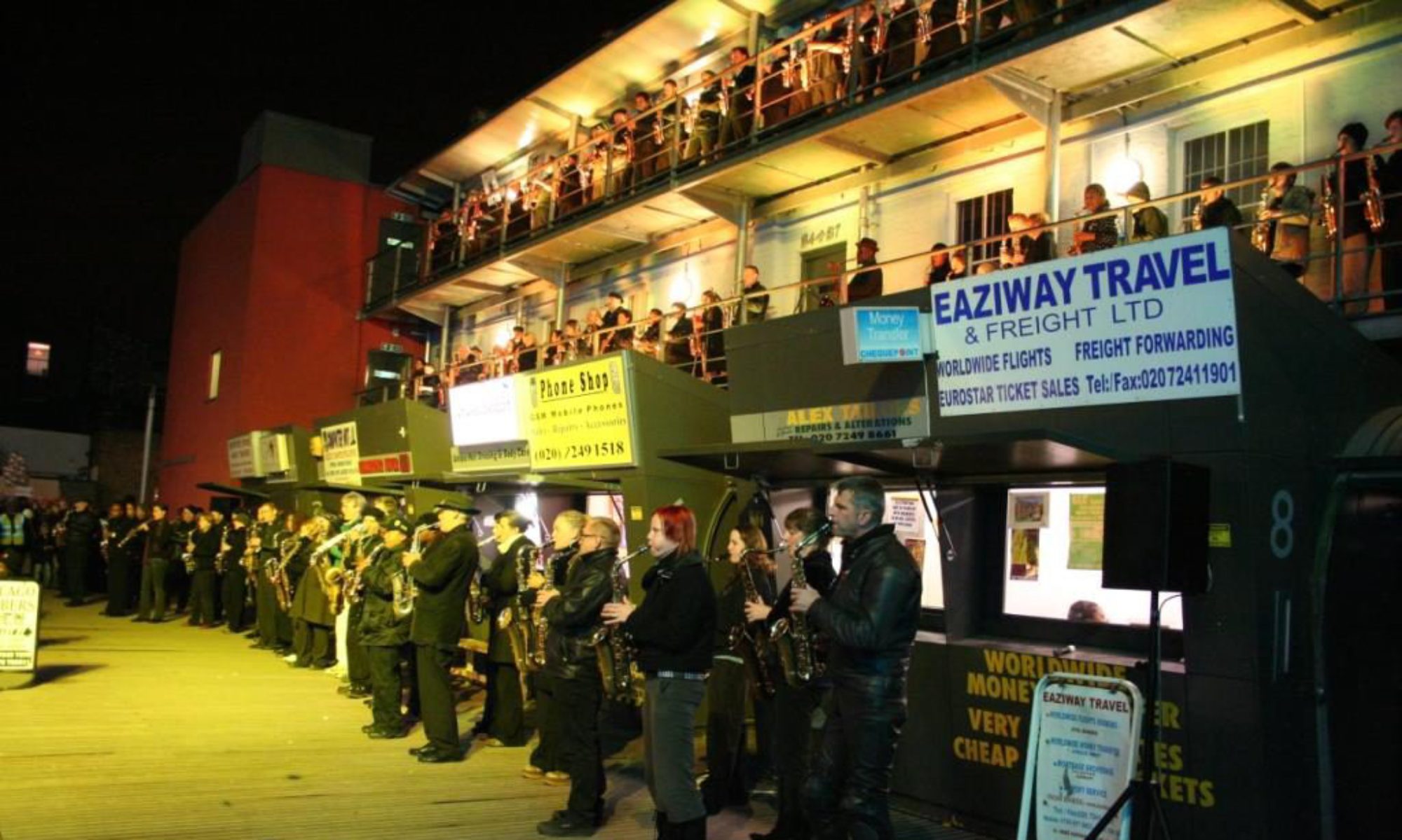World Architecture News, 5 November 2012, website publication
Following last year’s success in the WAN Colour in Architecture Award, HawkinsBrown takes home this year’s Effectiveness title
We are delighted to announce that the winner of the 2012 WAN Effectiveness Award, sponsored by Buro Happold, is HawkinsBrown with their stunning Gillett Square scheme in Dalston, London. Representing local cultures and spearheading improvement throughout the community, this is a prime example of effective architecture.
The team at HawkinsBrown took on a mammoth project in the 1990s when they addressed the needs of Dalston by conceptualising a central square which would serve the needs of all community groups. The desire for a plaza of this ilk was ignited some twenty years ago and was finally brought to flame in 1998 when funds became available for masterplans to be drawn up.
Dalston is a multi-cultural area of London, alive with creative industries and community groups, all of which had to be satisfied by HawkinsBrown’s plans. In order to retain the character of the Gillett Square site, a number of buildings were retained and renovated, with certain derelict structures being brought back to life.
A derelict car park has been transformed into a new town square, supplying much-needed open-air space for public performances and teaching. HawkinsBrown has also constructed retail facilities for local businesses as well as arts and voluntary organisations, opening them up to the community by placing them around this buzzing central square.
The architects explain: “A sense of place has emerged with the rehabilitated managed workspaces, offices and workshops with their first- and second-storey balconies looking over the square.”
|
|
For Graham McClerments of BDP, it was the practice’s understanding of the end user that was the winning formula as he declared: “It’s interesting…a new thing for a cultural generation.” Also of interest to McClements was ‘the whole social agenda’ and ‘positive contribution’ that the scheme has made to the local community.
Mark Reddington of LMN Architects was impressed by the impact of the design detail, noting: “What has been done architecturally has facilitated the end result…a very worthy result.”
Also picked out by the judges was the Binh Duong School in Binhduong by Vo Trong Nghia, Co. Ltd. This Vietnamese private school sits on a 5,300 sq m site in a luscious forest and looks to become a prototype for suburban schools in a tropical climate.
The judges were impressed by the school’s concept and the versatility of the architecture practice. Christina Seilern of Studio Seilern also praised Vo Trong Nghia’s use of sustainable shading throughout the school, noting: “I think it’s leading in creating natural ventilation and solar shading outside.”
While the project made quite an impact on our esteemed jury panel, it was just edged by HawkinsBrown’s Gillett Square for the title as the judges felt that the latter made a stronger case for effective architecture.
Gavin Thompson, Partner at Buro Happold concluded: “This is the third year running that Buro Happold has sponsored the WAN Effectiveness Award and each year we have seen an increase in the calibre of submissions. The award puts the aesthetic elements of architecture to one side and gets to the crux of what design is about: a positive outcome for the end user. Congratulations to the team at HawkinsBrown on their exemplary project which delivered such a positive space for the local community.”
Our knowledgeable jury was made up of Graham McClerments from BDP, Christina Seilern from Studio Seilern Architects, Mark Reddington from LMN Architects, Gavin Thompson from Buro Happold and Peter Gluck who took part remotely from Peter Gluck and Partners in New York.
Sian Disson
News Editor














